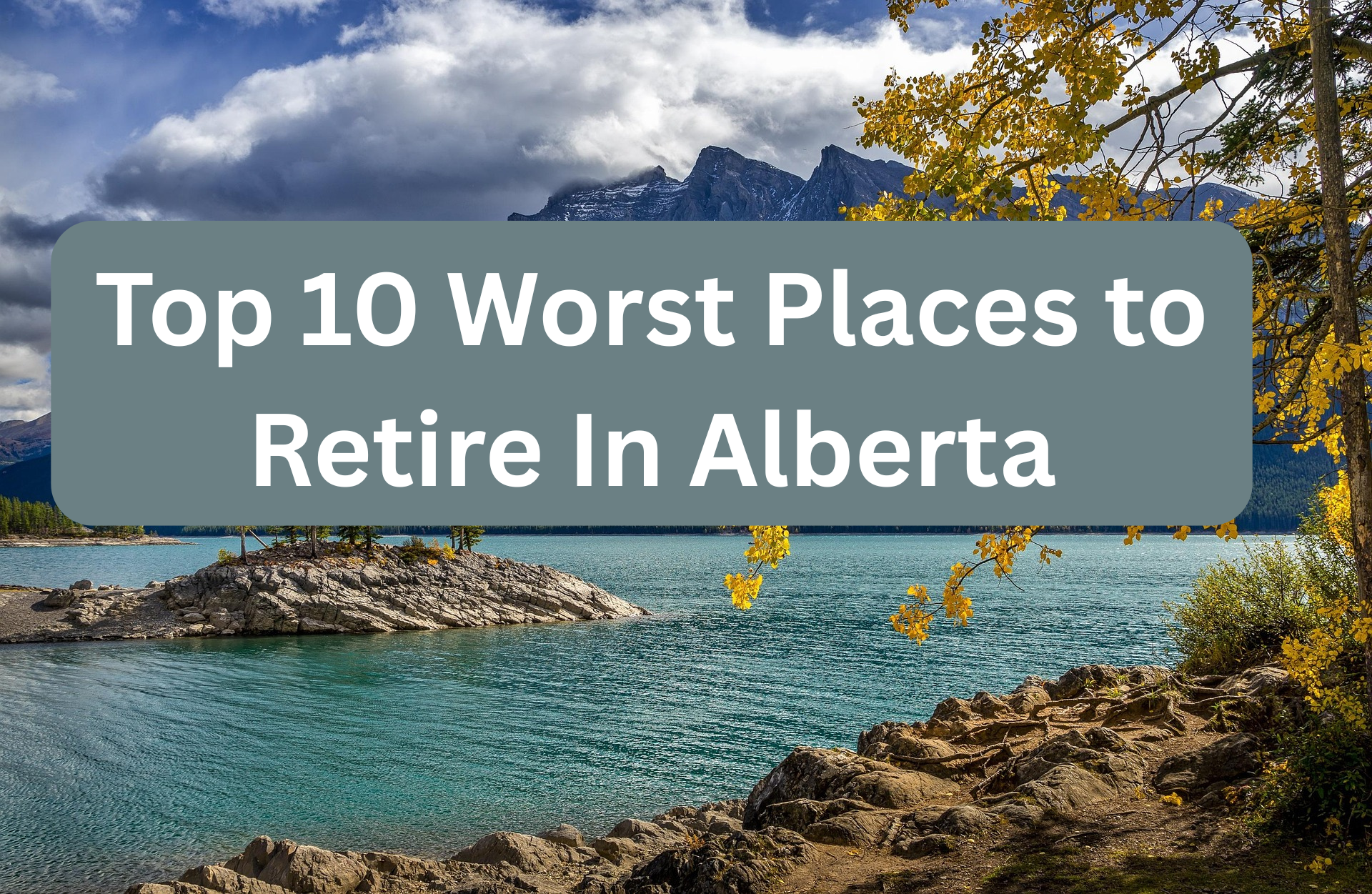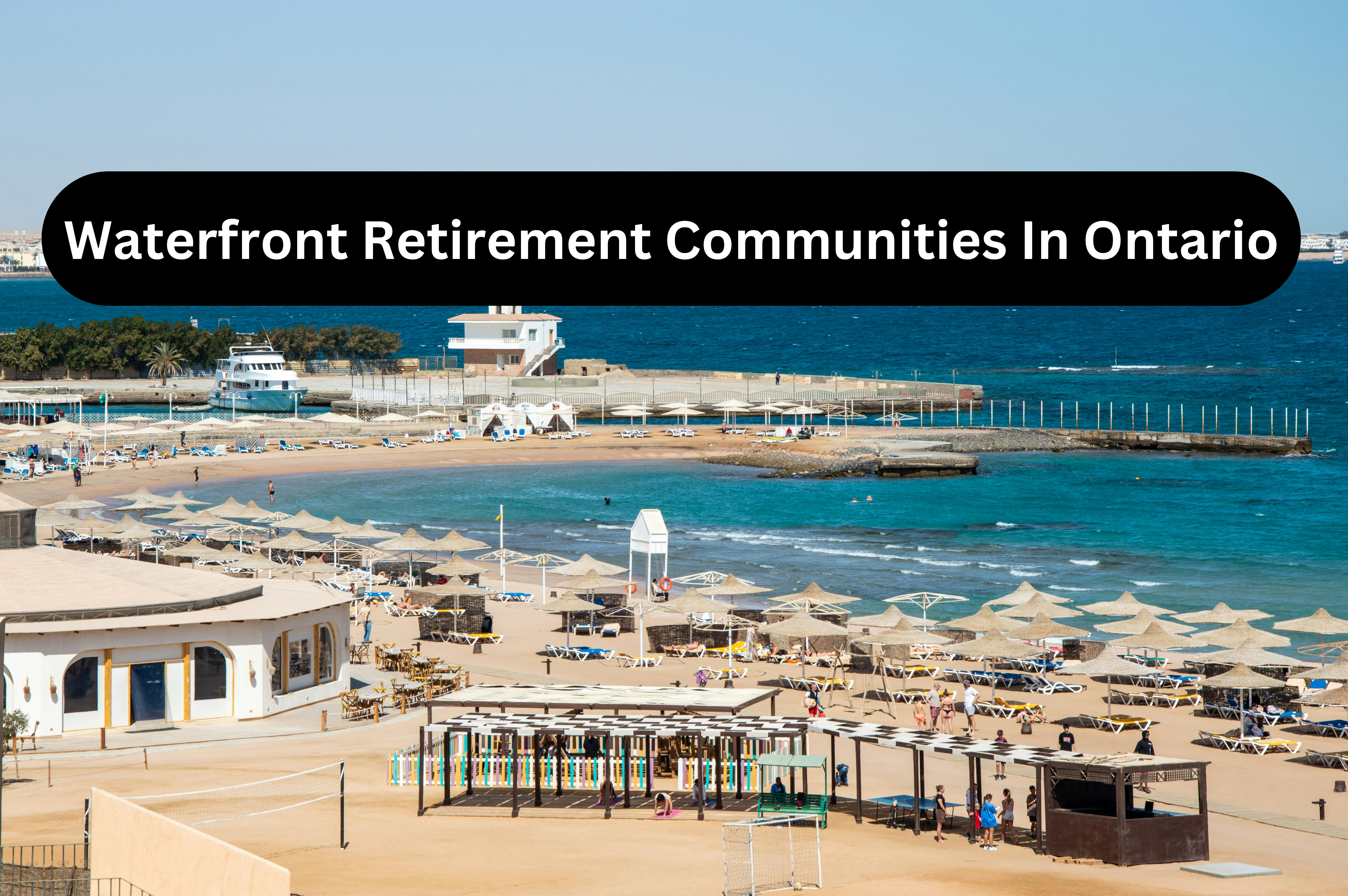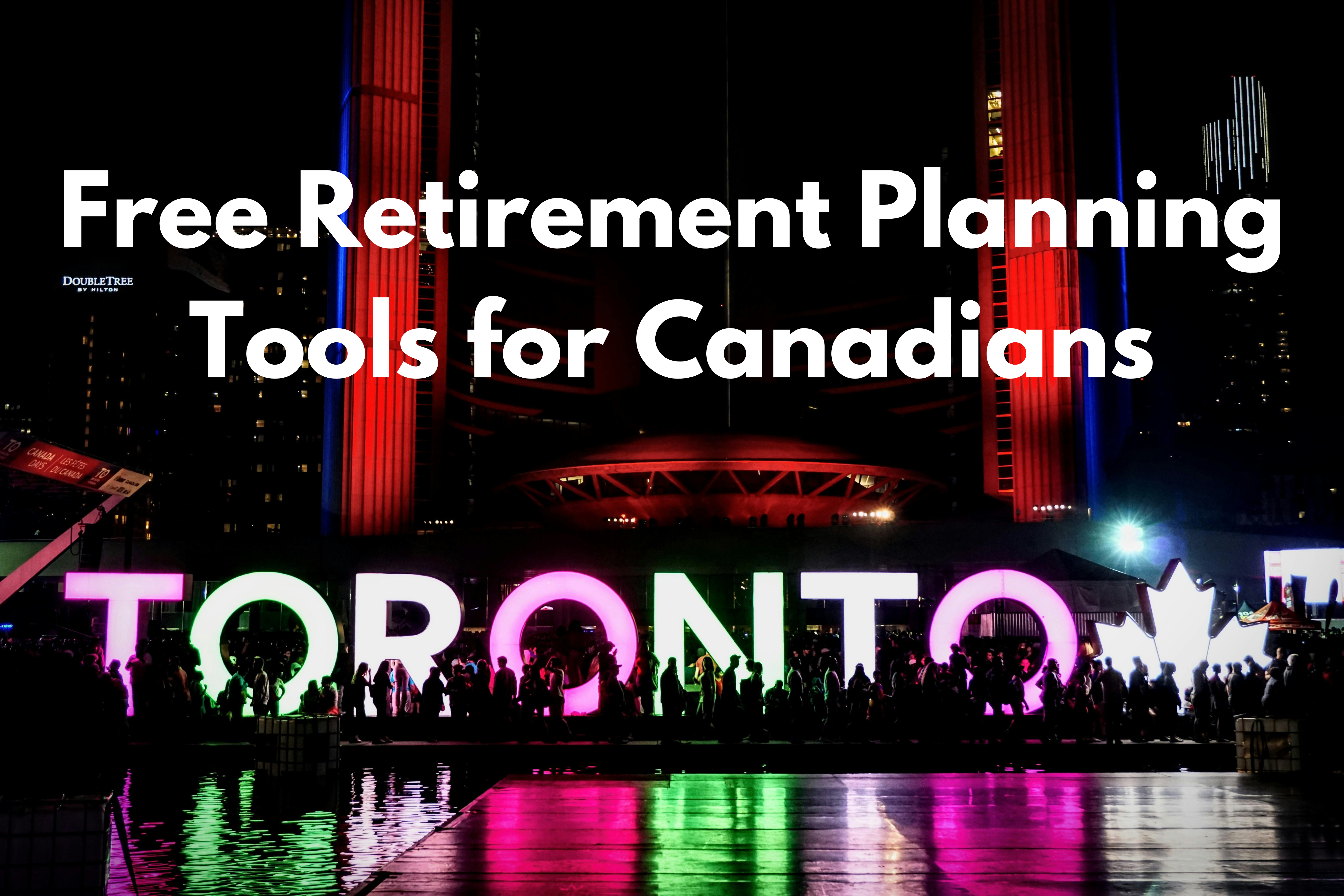Top 10 Worst Places to Retire In Alberta[ New updates]

Retirement is often pictured as a time of comfort, relaxation, and enjoying the rewards of years of hard work. But not every location in Alberta is well-suited for retirees—especially for Canadians looking for affordability, healthcare access, and a supportive community. While Alberta has some wonderful places to retire, there are also communities that can pose real challenges for seniors.
Why you should read this:
Before making a big decision about where to spend your retirement years, it’s important to know both the best and the worst options available. This guide highlights the 10 worst places to retire in Alberta, ranked based on factors like cost of living, harsh winters, access to healthcare, availability of senior-friendly activities, and overall quality of life.
If you’re planning your retirement in Alberta—or just curious about which areas may not be the best fit—this article will help you avoid costly mistakes and guide you toward smarter choices.
What Makes a Place “Bad” for Retirement in Alberta?
Not every town or city in Alberta is retirement-friendly. While some communities thrive with affordable housing, healthcare services, and senior-focused amenities, others can make day-to-day life harder for retirees. Here are the key factors that can turn a location into one of the worst places to retire in Alberta:
1. High Cost of Living
Some Alberta communities especially those tied to the oil and gas industry have inflated housing and rental costs. This makes it tough for retirees living on fixed incomes like CPP, OAS, or RRSP withdrawals to stretch their budget.
2. Harsh Weather and Long Winters
Alberta is known for cold, snowy winters, but in northern and remote towns, temperatures can be extreme. Seniors may struggle with icy roads, limited outdoor activity, and higher heating bills.
3. Limited Access to Healthcare
For retirees, nearby hospitals and specialized medical services are essential. Smaller or remote Alberta towns often have limited healthcare facilities, meaning longer wait times or hours of travel for treatment.
4. Isolation and Distance from Amenities
Some towns are far from major cities, making it difficult to access shopping, cultural activities, or even family visits. Social isolation is a serious concern for retirees, especially when public transportation is limited.
5. Lack of Senior-Friendly Programs and Housing
Many smaller communities lack affordable senior housing, recreation centers, or programs designed for older adults. This makes it harder to stay active, engaged, and socially connected.
6. Economic Instability in Resource-Based Towns
Places heavily dependent on oil, gas, or forestry can feel unstable during economic downturns. Retirees may find local services cut, costs rising, and housing markets unpredictable.
Also read 10 Retirement Questions You Should Be Asking
10 Worst Places to Retire in Alberta (Ranked)
1. Fort McMurray
Fort McMurray has a reputation across Alberta as the “oil sands city,” and while the jobs brought people in droves over the years, it’s not exactly a retiree’s paradise. The cost of living here is noticeably higher than in most parts of the province groceries, fuel, and even basic services run you more. Housing can be steep, too, especially when the oil patch is booming. For seniors on a fixed income, that adds up fast.
Another challenge is the healthcare system. While there’s a decent hospital, many specialists aren’t local. Retirees often have to travel to Edmonton for more complex care, which means either long drives down Highway 63 or booking flights. Add in the fact that winters are long, cold, and dark, and you start to see why retirees don’t flock here.
Fort McMurray also doesn’t have that “retirement community” feel. The population skews younger, full of transient workers who come and go. Social programs for seniors are limited compared to southern Alberta towns. Sure, the boreal forest is beautiful, and fishing and outdoor life are right at your doorstep but if you’re after affordable, community-driven retirement, this isn’t the place to settle down.
Nearby Alternative: If you like northern living but want something more retirement-friendly, look at St. Albert (just outside Edmonton). It offers excellent healthcare access, walkable neighborhoods, and a welcoming community vibe without Fort McMurray’s high costs and isolation.
2. Grande Prairie
Grande Prairie is one of the biggest cities in northern Alberta, but don’t let the size fool you into thinking it’s retiree-friendly. Life here has its perks if you like a busy, growing community, but for retirees, the downsides often outweigh the benefits. Winters are no joke long, frigid, with heavy snow that can make even short errands a hassle. If mobility is a concern, getting around in icy conditions is tough.
Housing isn’t as expensive as Calgary or Edmonton, but it’s higher than many smaller Alberta communities. Combine that with utilities and groceries, which cost more the further north you go, and a fixed pension stretches thinner here.
Healthcare is available there’s a regional hospital but it’s often over capacity. Wait times for specialists can be frustrating, and many seniors still need to travel south for certain treatments. Add in the sprawling nature of the city, and if you don’t drive, getting around isn’t simple.
For younger families chasing work, Grande Prairie makes sense. But for retirees, the combination of harsh winters, cost of living, and limited cultural or senior-friendly programming makes it a tough spot to age comfortably.
Nearby Alternative: Consider Red Deer instead. It has solid healthcare, more retirement communities, and a central location between Calgary and Edmonton. You’ll still find a lively city but with better services for seniors.
3. Fort Chipewyan
If you’ve ever been to Fort Chipewyan, you’ll know right away it’s one of Alberta’s most remote communities. It sits along the shores of Lake Athabasca, surrounded by incredible natural beauty, but beauty doesn’t always translate into livability for seniors. The community is only accessible by air for much of the year, with winter roads offering seasonal access. That isolation is one of the biggest hurdles retirees face here.
Healthcare is extremely limited. There are local clinics for basic care, but anything specialized usually means flying out to Fort McMurray or Edmonton. Imagine dealing with mobility issues or chronic health concerns and having to rely on planes just to see a specialist not exactly convenient.
Groceries and essentials are more expensive, too, since everything has to be flown in or brought up during the short shipping season. That can make budgeting hard if you’re living on retirement savings or a fixed income.
While Fort Chipewyan has a strong sense of Indigenous culture and history, it lacks senior-focused amenities, programs, and housing options. Winters are brutally cold and isolating. For retirees who want easy healthcare, affordable living, and social opportunities, this remote northern community simply doesn’t deliver.
Nearby Alternative: Try Athabasca, located further south. It still offers beautiful natural surroundings and riverfront scenery but has road access, better healthcare, and more services for retirees.
4. Cold Lake
Cold Lake is known for its stunning namesake lake and the nearby air force base, but as a retirement destination, it’s not ideal. The climate alone is a deterrent: winters are long, bitterly cold, and windy, often stretching well into April. If you’re dreaming of enjoying the outdoors year-round in your retirement, those plans will likely get sidelined for months at a time.
Healthcare exists but is limited. For more advanced care, you’d often be sent down the road to Edmonton. While that’s not impossible, it does mean hours of travel when you’d rather have everything close to home. Seniors also find that retirement living options are slim here. There just aren’t many dedicated senior communities or programs designed for older adults.
On the positive side, the lake is a draw, and summers can be beautiful. But those few warm months don’t make up for the overall challenges. Cold Lake has more of a military and working-age population, so it lacks that cozy, retiree-oriented feel you’d get in southern Alberta towns. For those reasons, while it’s a great place for fishing or a short visit, calling it home in your retirement years would be tough.
Nearby Alternative: Check out Lac La Biche. It shares Cold Lake’s outdoor beauty but has more accessible healthcare and a stronger community vibe, including programs and facilities that cater to seniors.
5. Slave Lake
Slave Lake sits on the edge of Lesser Slave Lake, and while the scenery is gorgeous, day-to-day life isn’t exactly retirement-friendly. The town is fairly remote, with limited healthcare options. While there is a hospital, for specialized services you’re often looking at trips to Edmonton. That’s a big challenge if you’re older and need regular medical support.
Another issue is the environment itself. Slave Lake has a history of wildfires the devastating 2011 fire destroyed much of the town and wildfire risk remains high every summer. For retirees, that kind of uncertainty adds stress.
Winters are cold and long, and while the lake offers summer recreation, those activities are limited to just a few months of the year. There are some community programs, but senior-focused services are thin compared to larger centers.
Groceries and everyday goods can also cost more due to its location. While it’s a lovely place for a summer cabin or a quick holiday, living here full-time as a retiree comes with a laundry list of challenges: isolation, healthcare limitations, harsh weather, and wildfire risks. Most retirees would find it a tough place to age comfortably.
Nearby Alternative: Consider Westlock, a smaller community with better proximity to Edmonton. It offers affordability, calmer living, and easier access to healthcare compared to Slave Lake’s remoteness.
6. Lloydminster
Lloydminster is a unique city, straddling the Alberta–Saskatchewan border, but it’s not the best spot for retirees. The town has a strong oil-driven economy, which influences its cost of living. Housing prices aren’t outrageous, but they’re higher than you’d expect for a smaller city, and service costs often follow suit. That can put strain on a retirement budget.
Healthcare is available, but not as robust as in Calgary, Edmonton, or Red Deer. Many residents end up traveling for specialized services, which isn’t ideal in retirement years. There are some senior services, but the city hasn’t developed a strong retirement-oriented community.
Culturally, Lloydminster has more of a working-class, industrial atmosphere than a relaxed, retiree-friendly one. Harsh winters, with lots of wind sweeping across the prairies, don’t help either. Retirees looking for walkable communities or lively arts and leisure programs might find it lacking.
Yes, you’ll find friendly locals and the convenience of being on two provinces’ doorsteps, but overall, Lloydminster doesn’t provide the affordability, amenities, or lifestyle that retirees usually look for. For many seniors, it ends up feeling more like a pit stop than a place to settle down permanently.
Nearby Alternative: Camrose is a better fit for retirees. It has a strong senior community, plenty of healthcare facilities, and a relaxed small-town atmosphere with big-city amenities nearby.
7. High Level
High Level is one of the northernmost towns in Alberta, and that alone makes it challenging for retirees. The winters are long, dark, and brutally cold. For months at a time, you’re battling snow, ice, and isolation. Travel is another big concern the nearest larger centers are hundreds of kilometers away. Flying in and out is often the only practical option, which quickly gets expensive.
Healthcare in High Level is limited to basic services. If you need ongoing specialist care, you’ll find yourself traveling frequently, which isn’t ideal for seniors with chronic conditions. Beyond that, the community itself doesn’t have a strong base of retiree amenities senior centers, cultural programs, or organized leisure activities are minimal.
Groceries and goods cost more, thanks to the distance. While locals pride themselves on being resilient and self-sufficient, that rugged lifestyle doesn’t mesh well with most retirement goals. Unless you thrive in extreme conditions and don’t mind long stretches without much happening, High Level can feel lonely and isolating. For most retirees, especially those who value easy healthcare and affordable living, High Level is simply too far off the beaten path.
Nearby Alternative: Look at Grande Cache. While still remote, it offers beautiful mountain scenery, a slower pace of life, and easier access to services compared to High Level’s extreme isolation.
8. Brooks
Brooks is located in southern Alberta and is more affordable than some northern towns, but affordability alone doesn’t make it retirement-friendly. Brooks has a younger, diverse population driven by its strong agricultural and food processing industries. For retirees, that means fewer tailored services, programs, or communities specifically geared toward seniors.
Healthcare is available but limited. While there’s a local hospital, for anything specialized, you’re likely headed to Calgary or Medicine Hat. That travel can become a hassle over time.
Another drawback is the lack of cultural and recreational amenities. There are parks and outdoor spaces, but seniors looking for arts programs, retiree networking groups, or diverse leisure activities might feel underserved. Brooks also faces the challenge of being less walkable, so unless you drive, getting around isn’t easy.
Weather-wise, Brooks is semi-arid, which means hot, dry summers and cold winters with sharp winds. Some enjoy the sunshine, but others find it harsh. While it’s not the worst place in Alberta, Brooks doesn’t offer much in terms of senior living facilities, lifestyle amenities, or healthcare convenience. For retirees, it ends up being more practical as a working town than a comfortable place to grow older.
Nearby Alternative: Medicine Hat is a fantastic option in southern Alberta. It’s affordable, sunny year-round, and has strong healthcare facilities and senior-focused activities.
9. Peace River
Peace River is a picturesque town nestled along the river valleys of northern Alberta. The scenery is stunning rolling hills, water views, and plenty of outdoor adventure. But when it comes to retirement living, it falls short. Winters are long and snowy, and the steep geography of the area makes mobility a challenge for seniors, especially with icy conditions.
Healthcare services are limited, and while there’s a local hospital, specialized care requires travel to Grande Prairie or Edmonton. For retirees with health concerns, that distance becomes a major drawback.
The community itself is fairly small, so while there are some local programs, there isn’t a wide variety of senior-specific activities or housing options. Cultural amenities, shopping, and entertainment are limited, too, which can make day-to-day life feel quiet or even isolating.
Peace River is a beautiful spot to visit or even own a cabin, but for retirees seeking convenience, affordability, and strong healthcare access, it’s not the best choice. The isolation, combined with the challenging winters, makes it tough for seniors to thrive here long-term.
Nearby Alternative: Try Edson, located between Edmonton and Jasper. It has a similar small-town charm and access to nature but with better road links, amenities, and healthcare.
10. Bonnyville
Bonnyville, located in northeastern Alberta, is surrounded by lakes and natural beauty. It’s great for fishing or outdoor getaways, but as a retirement community, it has gaps. Winters are long, cold, and snowy typical of northern Alberta and that can limit mobility and social activities for months of the year.
The healthcare system here is limited. There are basic services, but anything beyond the essentials requires traveling to larger centers like Edmonton. That’s not practical for seniors who need frequent medical care.
Bonnyville also lacks robust senior housing and retirement-focused programs. While the town is friendly and has a small-town charm, it doesn’t offer the kind of organized activities or support networks many retirees look for. Shopping and entertainment are limited, which means you’ll likely rely on traveling elsewhere for variety.
It’s a community more suited to working families or outdoor enthusiasts than retirees. While the scenery is a plus, retirees looking for affordability, healthcare, and easy access to amenities would likely feel underserved in Bonnyville. For most, it’s better as a vacation spot than a permanent retirement destination.
Nearby Alternative: Vegreville offers a more senior-friendly setup, with retirement homes, healthcare access, and a warm community atmosphere, while still being within driving distance of Edmonton.

Challenges Retirees Face in These Alberta Communities
Not every town in Alberta is designed with retirees in mind. While some offer affordable living and friendly small-town charm, many of the “worst places” for retirement fall short in several important areas. Here are the key challenges seniors often face in these communities:
1 Harsh Weather and Long Winters
Alberta’s northern and remote towns, like High Level, Peace River, and Fort Chipewyan, experience some of the coldest, longest winters in Canada. For retirees, this can mean:
- Higher heating bills during long stretches of -20°C to -40°C weather
- Limited outdoor activity for several months
- Increased risk of isolation during snowstorms or icy conditions
2 Limited Healthcare Access
Healthcare is one of the top concerns for seniors, and smaller or remote Alberta communities often struggle to provide it:
- Hospitals and clinics may be hours away, requiring long travel for routine care or emergencies
- Specialist care (cardiology, oncology, geriatrics) is typically only available in larger centres like Edmonton or Calgary
- Wait times may be longer due to fewer doctors serving larger geographic areas
3 Rising Cost of Living in Resource-Driven Towns
Communities tied to oil, gas, or forestry like Fort McMurray, Grande Prairie, or Lloydminster often face higher living costs than other parts of Alberta. Retirees on fixed incomes may find:
- Elevated housing prices or rents during boom cycles
- Higher grocery, fuel, and utility costs due to distance and demand
- Difficulty budgeting for long-term stability if the economy swings
4 Fewer Cultural and Recreational Opportunities
While smaller towns can feel peaceful, they often lack activities that keep seniors socially engaged and active:
- Limited senior centres, fitness programs, or hobby clubs
- Few cultural events, arts, or community programs compared to larger cities
- Travel often required for entertainment, volunteering, or organized group activities
5 Geographic Isolation and Transportation Issues
Many northern and rural communities are not well-connected by public transit, making mobility a challenge:
- Seniors who no longer drive may struggle to access groceries, medical appointments, or social outings
- Harsh winter driving conditions add risks, especially on rural highways
- Air travel from remote areas can be costly and limited in frequency
Summary
For Canadian retirees, these challenges combine to make certain Alberta towns less than ideal for retirement. Harsh winters, isolation, high costs, and limited healthcare are especially difficult for seniors who want comfort, safety, and accessibility in their retirement years.



